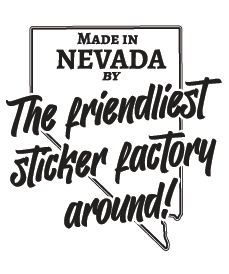Once we receive your information file, Etiquette Systems can reproduce just about any type of custom bar-code labels, including all the industry standards.
Most bar-coding systems in wide use today employ so-called one-dimensional or 1D symbologies, linear bar-codes utilizing variable-length alphanumeric designators that access computerized databases when scanned. These include:
- Bookland EAN-13: A 13-digit European Article Number bar-coding system used in the book publishing industry. These codes are also used to label software, e-books, periodicals, and videos.
- Code 39: A variable-length coding system most commonly used for industrial and governmental purposes. It’s often used on ID badges, as well as for inventory control and asset management labels.
- Code 128: A very high-density symbology that can encode all 128 ASCII symbols, allowing for more information than normal bar-codes. It’s frequently used for shipping labels and similar bar-code stickers. Formerly known as UCC/EAN-128.
- Global Trade Item Number: Includes GTIN-8 (EAN-8), GTIN-12 (UPC-A), GTIN-13 (EAN-13), and GTIN-14 (SCC-14). The number after the dash indicates the total number of digits encoded. These are the classic variable data codes most of us are accustomed to seeing on commercial products in stores. The familiar 12-digit Universal Product Code (UPC) is used throughout the U.S. and Canada. GTIN-13 (EAN-13) is applied to goods with worldwide distribution, while the more compact GTIN-8 (EAN-8) is used on smaller packaged goods.
- GS1 Databar: A Reduced Space Symbology bar-code that allows higher information density than GTINs in a smaller space. It’s generally used for small-item identification.
- I25: Interleaved 2 of 5, number-only bar-code labels that are easy to read at a distance. Commonly used in labs, distribution centers, and warehouses.
- ISBN: The International Standard Book Number symbology used for printed books.
- ISSN: The International Standardized Serial Number bar-coding system used for labeling print magazines and other periodicals.
- PostNet: The Postal Numeric Encoding Technique used by the U.S. Postal Service for automated mail sorting.
- SSCC (SSCC-18): 18-digit Serial Shipping Container Codes, usually utilizing the Code 128 protocol.
Two-dimensional or 2D symbologies are becoming more common. These complex bar and “speckle” codes can encode everything you need to know about a product without actually accessing a database. They include:
- Data Matrix: Codes with a storage capacity of up to 2,000 characters (equivalent to about a single-spaced page of text). They’re used primarily to create bar-code stickers to label small items, including electronic circuit boards.
- PDF417: Stacked portable data file symbology that consists of a grouping of smaller, high-density bar-codes. This system is used for identification, transport, and inventory control.
- QR: A popular bar-coding system used for marketing, including magazine/newspaper advertisements and signs, where the viewer can scan the code directly with a smartphone to access a website with more information about the product or service. Most of us have seen QRs, and many of us have used them.




